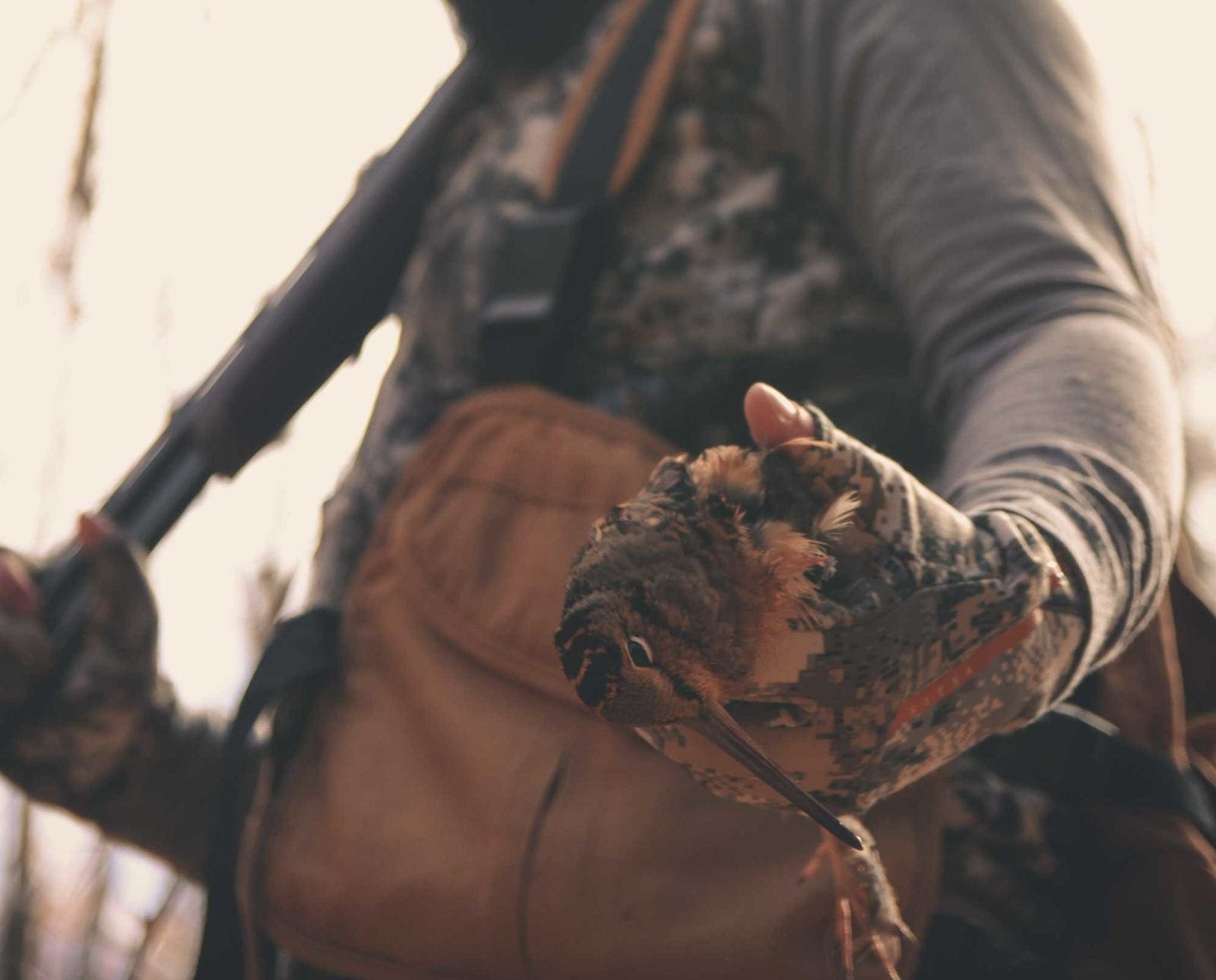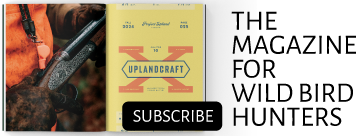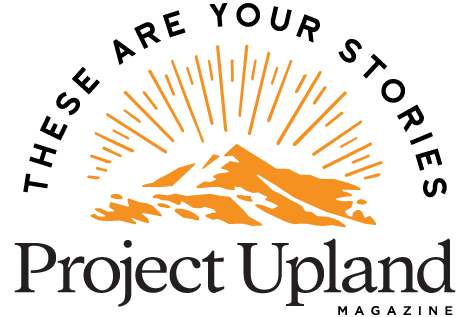Home » Hunting Culture » How to Recover More Birds Without a Dog
How to Recover More Birds Without a Dog

Ryan Lisson is a biologist and regular content contributor to…
Do you use these strategies to recover more birds without a dog?
If you’ve been hunting long enough, you probably know the feeling. After taking a shot at an upland bird—be it grouse, pheasant, or woodcock—you watch it fold to the ground. But as you get closer, you can find no sign that indicates you even hit it. You spend twenty minutes walking in circles trying to find the bird you watched drop. And yet you come up empty-handed. It’s not a moment you’d like to remember, but it will haunt you all the same. Bird loss is bound to happen from time to time, but there are many ways to recover more birds without a dog.
Having a trained dog with you is obviously one of the best ways to recover more birds. Dogs have far-superior senses (particularly their noses), allowing them to sniff out downed birds fairly easily. But not everyone wants the responsibility of a bird dog or maybe it’s just not practical to bring your canine companion on a given hunt. So if you’re planning on hunting alone, you need to be willing to do the hard work and jump into the thick stuff like a good bird dog would.
Things That Complicate Bird Recovery
While there are lots of factors that play into getting a bird from the air into your vest, there are two big ones that make retrieval really hard sometimes. First, the type of cover most game birds prefer to use is extremely thick. Tangled briar patches, dense aspens, or claustrophobia-causing cattails all provide a lot of structure to hide motionless birds. What further complicates the matter is that most game birds have extremely good camouflage. This is why finding a flashy pheasant rooster is easier than finding a drab-colored female woodcock; although roosters can disappear pretty well, too.
Second, even if you make a lethal shot on a bird, they can sometimes keep flying or running much further than you’d think possible. When you arrive at the spot you expect to find them, they may have kept going. And without a nose to sniff them out, you’re somewhat limited in how you can track and find them. Let’s look at some ways that will help recover more birds without a dog.
Bird Hunting Retrieval Tips
Probably the biggest advice we can give to reduce lost game in the field is to only take shots you feel confident about. Know your shooting limitations. Sure, there’s something to be said about shooting through brush if you have the skills for it (especially in dense partridge country), but always taking risky ‘Hail Mary’ shots is a recipe for crippled and lost birds. If it’s too far downrange or there’s too much cover between you, don’t risk winging them. You ethically owe it to the game birds we all love to chase.
After shooting, stop everything and concentrate on how the bird reacts and where it goes. Make a mental note of a landmark (e.g., individual tree trunk, open grassy patch, etc.) you’ll recognize where you last saw the bird. Don’t take your eyes off it. This is where it can get tricky because lots of distractions pop up in this moment. You might flush another covey of birds and be tempted to shoot at them too, but try to resist. Unless you saw a bird completely fold and fall in sight, you need to find your first one before you keep shooting in other directions. Often when hunters start shooting at other birds, they lose track of the first landmark or give the wounded bird more time to escape. They subsequently end up losing one or both birds. It is not a practice you should pursue when you want to recover more birds without a dog.
The one activity you should do is to reload your shotgun if you need to. You should always approach a downed bird with a loaded shotgun in case it flushes again and gives you a redemption shot.
As you get closer to the landmark, keep an eye out for blood or feathers that would indicate you connected with the bird. Don’t be afraid to pause suddenly when you arrive, which is often enough to flush a wounded bird. Take your time near the landmark and squat down to get a different view of the ground. Sometimes this simple change in perspective is enough to let you find the bird hiding under a log. But don’t forget to also look up. I’ve had at least one situation where a grouse crumpled and fell into some spruce boughs. I spent forever looking around the ground, when it was tucked into the tree at eye level. Go figure.
If you cannot find the bird or any sign of it, take the time to do some due diligence loops around the area, scanning the forest floor for anything that resembles the bird. It’s almost like mushroom hunting. Once you see a game bird on the ground that day, it will get much easier to spot them the rest of the day. But if you’re following the other tips from above, hopefully you won’t have to look all that hard to recover more birds without a dog!
Ryan Lisson is a biologist and regular content contributor to several outdoor manufacturers, hunting shows, publications, and blogs. He is an avid small game, turkey, and whitetail hunter from northern Minnesota and loves managing habitat almost as much as hunting. Ryan is also passionate about helping other adults experience the outdoors for their first time, which spurred him to launch Zero to Hunt, a website devoted to mentoring new hunters.




The granddaddy of tips – hang your orange hat where you think the bird fell because it’s difficult to maintain that reference point once you start searching and making circles in the area.
Thanks to project upland for the recent articles on dogless hunting. I’m starting my first dogless season in over 20 years and it’s kind of a drag. There will be bird dogs in my future, but it may be a couple years due to circumstances.
Happy to hear these articles have helped rekindle the flames! Last year we were hunting with dogs and I marked where I thought the bird went down with my hat. After 15 minutes of searching (elsewhere) we walked back over to the hat to only find the woodcock below it. A testament to their camouflage and the tendencies of us “dogless” hunting folk and our stranger habits. I honestly think I picked that up blood tracking deer more than anything.
Great tip on using the hat, thanks!
I used to hunt without a dog, and there were a few tactics that I used. first, watch the bird all the way to the ground, or until it’s out of sight. Second, I would drop my hat also, but instead of where I thought the bird went down, I’d leave it at my shooting position. If I wasn’t able to recover the bird right away, I’d come back to the exact position and play that shot over in my head, retracing what had happened, and this seemed to help. Lastly, and this took me awhile to come to was to stop shooting doubles, or as you mentioned, don’t shoot another flush before you pick up the first bird. I mainly hunt Gambels quail and chukar in the Mojave desert. This has helped me to recover many, many birds. Not only that, but I’m able to call the Gambels back in to me many times.